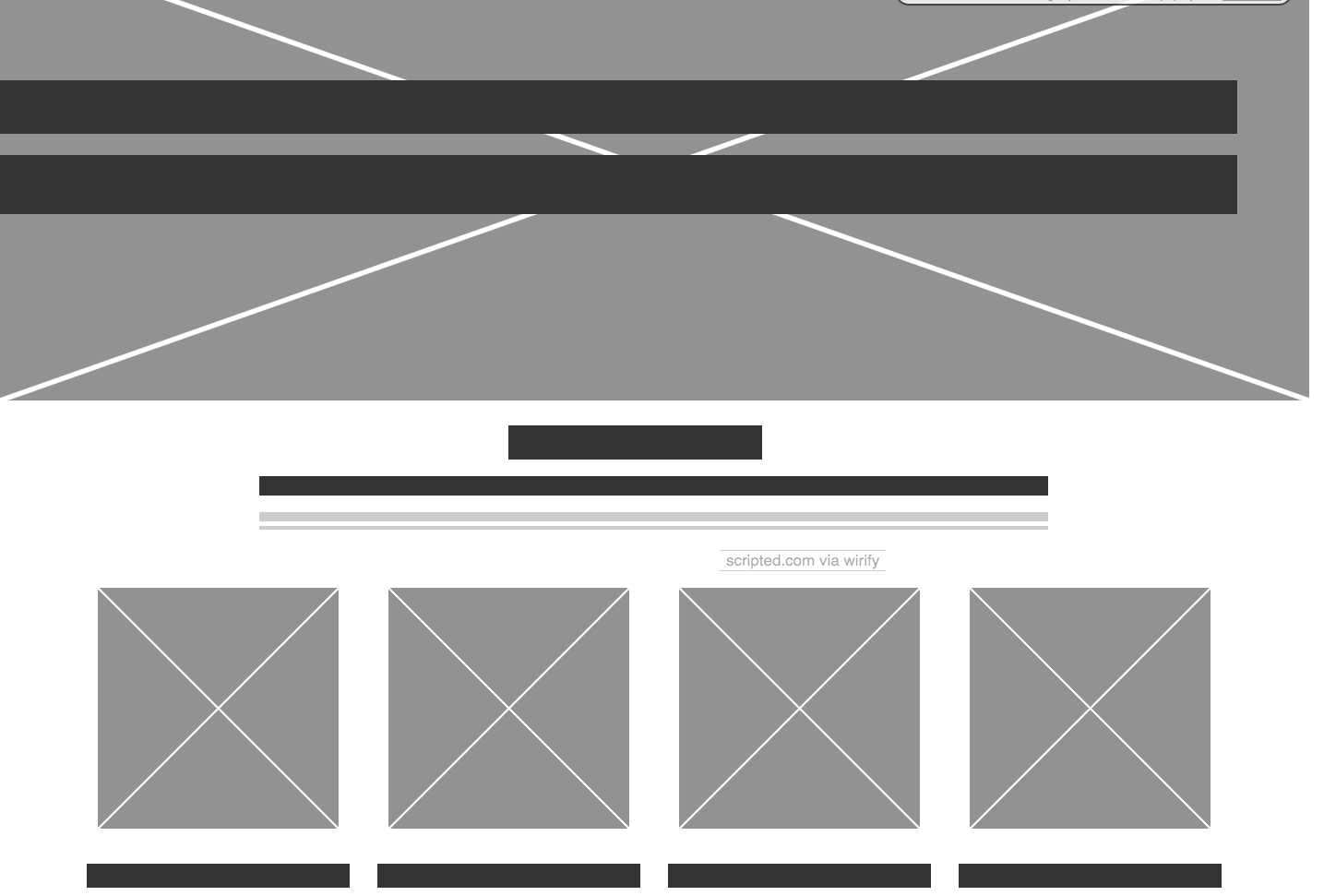
Which comes first in digital content creation: wireframe or word doc? Should design lead the way when you’re creating a website, landing page or other digital experience? Or should the wordsmiths craft the content for the design to work around?
We’ve teamed up with our friends at Scripted to reopen this timeless chicken and egg debate and asked Vice President of Design at Yahoo, David Robinson, why he thinks design should set the tone. See what David thinks below and also be sure to check out Scripted’s copy-first argument.
Why design should set your content strategy
The easiest way I can make the argument for design-led content creation is to look at what happens when design goes wrong. Bad design happens for many different reasons but one thing each poorly-constructed web page has in common is how it causes users to hit the BACK button as quickly as possible. It doesn’t matter how well thought-through and cleverly-crafted the words are if nobody is sticking around long enough to read them.
This is why I think that design needs to set the content strategy for any digital project. Only by first understanding how the audience will consume the information can the copywriter create the most effective messaging.
Good design creates a good first impression
In a post about why good website design really matters, Joe Putnam references a study called “Trust and Mistrust of Online Health Sites”. When participants were asked to search the web for relevant health information and report their first impressions, 94% cited design-related factors as reasons for mistrusting specific websites. It’s very hard to get past a bad first impression, no matter how good your content is.
But my argument isn’t just about those (thankfully) increasingly rare cases of laughably-bad web designs. It’s about letting design develop a format for content to be presented in the most effective and results-driven way possible. Allowing copy to lead the process usually results in completely inappropriate content because it’s difficult for writers to account for the myriad constraints and best practices of good website design if they’re starting from scratch. (And besides, don’t all writers fear the blank page?)
Good designers pay attention to things like eye-tracking studies that can help guide the creation of a successful site. The uber-important wireframe stage sets down the layout and format of a page, establishing features like image placement, use of white space or the size of text blocks that writers rarely consider. Sure, you then need to make sure that great content slots effectively into this template and no doubt there will be rethinking and revisions, but as designer Jeff Archibald says, designing the content structure first “is setting your copywriter…up for success”
Design-led is faster
I get that creating great copy can often be a slow and laborious process. But, as a rule of thumb, designing a website with all its different elements takes a lot longer than creating the copy. If you let copy lead the way and expect design to respond to every change or new idea, don’t bank on a quick completion.
When design set the content strategy, things happen much faster. Writers are often happy to have the design act as an editor – the number of words allowed for any given text space helps them make decisions about what’s really needs to be said. No writer I’ve ever worked with has come to me with too few words and it’s usually more efficient to cut copy than come up with something new, so the design-led process is deadline-friendly.
What do you think?
Those are David Robinson’s thoughts on the great design vs. copy debate. For more D-Rob, follow him on Twitter and watch this video interview where he discusses the finer points of product design.
Be sure and check out Scripted’s perspective on why content should come first (even though they’re wrong) then tell us what you think. How does your digital content team typically work together? Leave a comment below or tweet using #designorcopy.
Wireframe or Word doc? Vote for your favorite way to start web projects






Great article, and I completely agree. This is a debate we have gone around and around on and recently just revamped our process to provide the writers an outline of key term research as well as wireframes to lead their content creation efforts.
Interesting article! I need to overhaul my own site and this helps. BTW, you have a typo in this sentence: “It’s about letting design develop a format for content to presented in the most effective and results-driven way possible.”
Thanks Phil. That’s been fixed now. Appreciate your sharp eyes and glad you liked the post.
Imagine you’re making a movie: how good will it be if you start without a script?
websites are a medium of communication. The designs are functions of what is being communicated. Though it is faster to design a general/generic site that allows for all sorts and varieties of content, effectiveness suffers when content is limited by design.
As illustrated in the famous tweet “Which of these websites are you making” we have truly optimized the generic web. The most effective stories (not necessarily in clicks but in staying power/cultural impact/depth of response) will always start with the words/narrative with the design following closely behind.
In an ideal setting Copy and Art would grow together after that point, being informed by each other until it is time to ship. Even then we can allow websites to be living and evolving organisms, shaped by their audience and whatever narrative developments come along.
tl;dr web sites are containers for words/images; how can you build effective containers without understanding their contents?